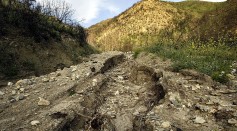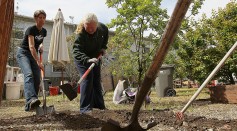Soil

Research Shows Rich Soil Disappearing on Farms in the Midwest

Man Dies from a Rare Brain-Eating Amoeba Found in Soil
Soil’s Water Absorption May Be Compromised Due To Climate Change
Climate Change On Soil: Tell-Tale Signs To Watch Out For
Cow Dung May Help Fight Climate Change
Study Reveals Phosporus Mapping of the World
Cattle Under Antibiotics Disrupts Soil Ecosystem, How Could It Be
Plants & Soil Might Be Affected By Future Climate Change: Drier Region, Less Soil Carbon Loss, Wetter Region, Increased Carbon Loss
SMAP Launch Promises New View of Earth’s Soil—From Space
NASA To Launch Satellite to Analyze Moisture Content of Earth
Most Popular

How Technology Is Changing the Real Estate Industry?

How a Plant-Based Diet Can Protect Against Breast Cancer: Insights from Nutrition Research

Study Reveals High Turnover in Scientific Research Careers: What This Means for Future Scientists

Nikolay Karpenko Biography, Photo, Career, Accomplishments






